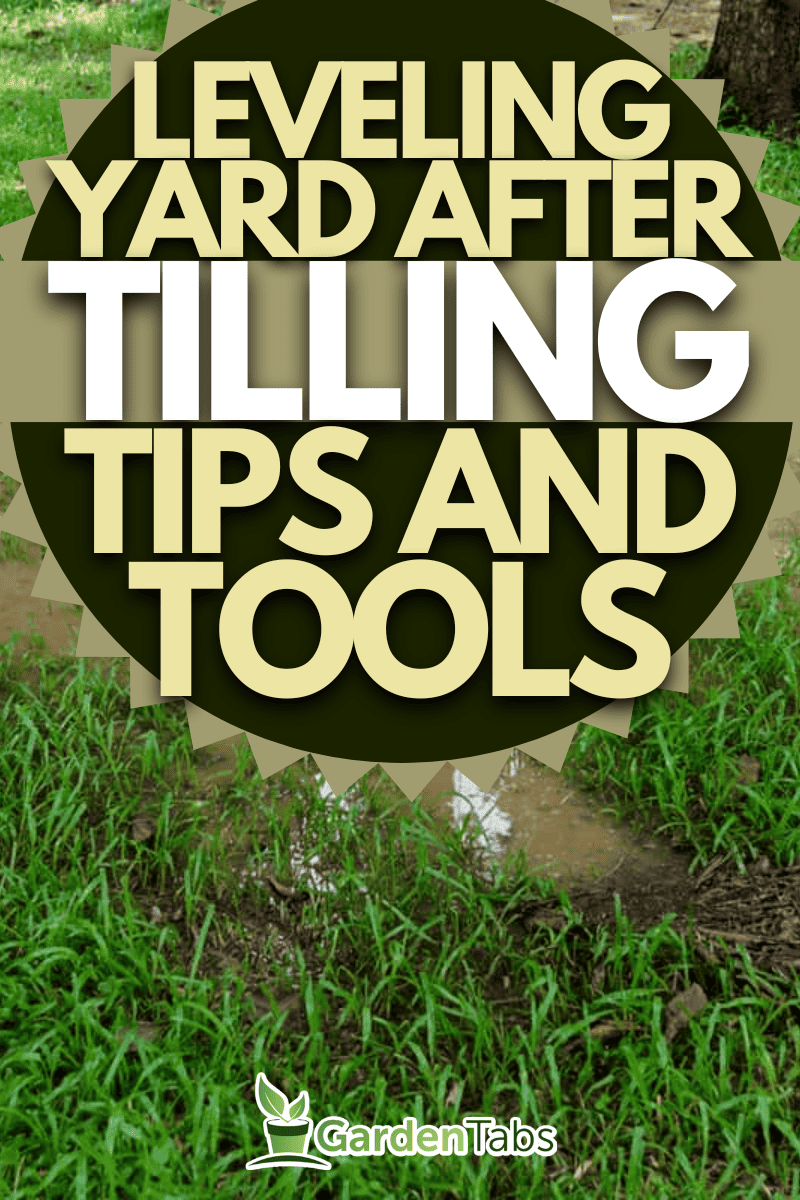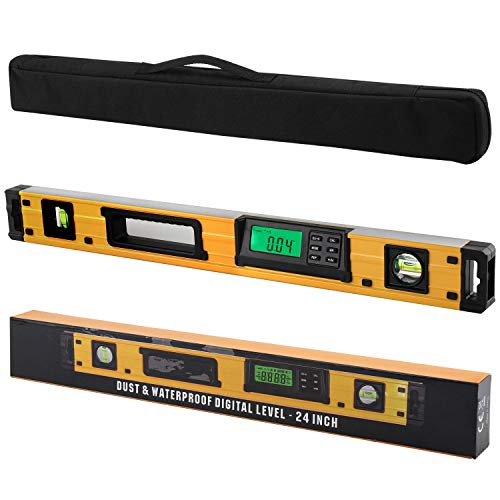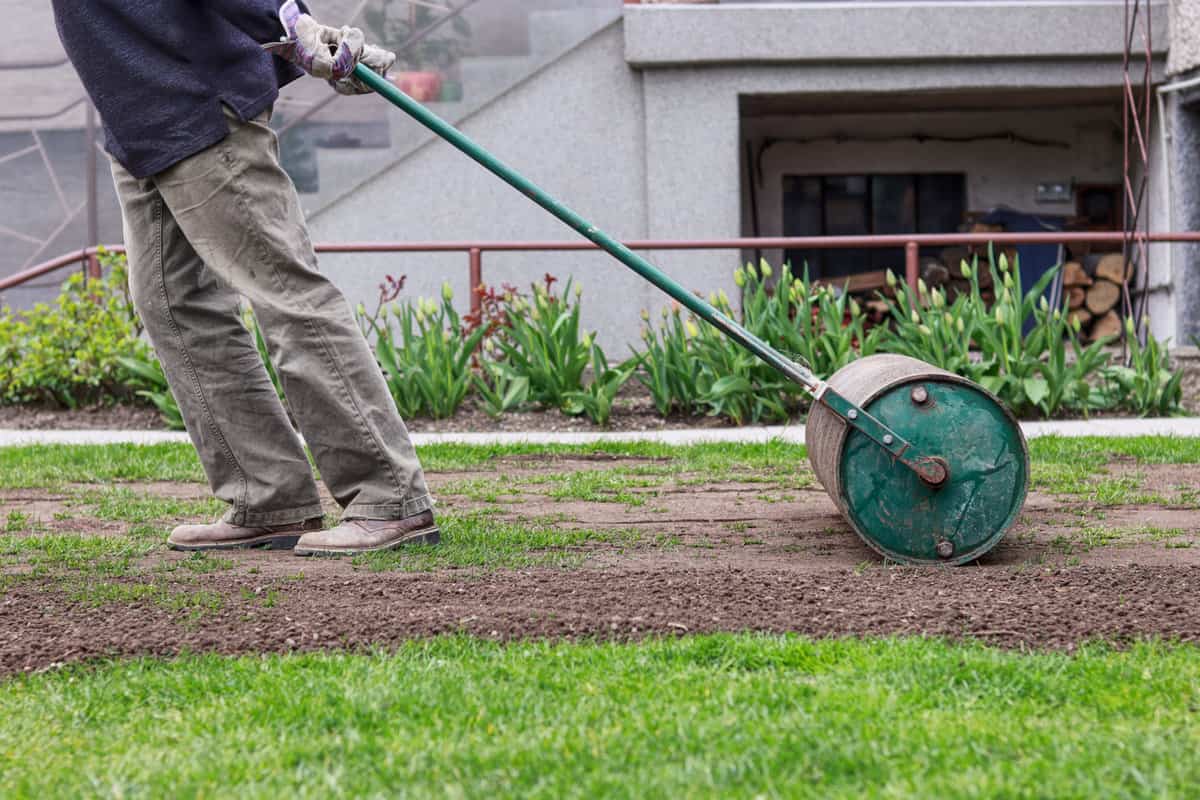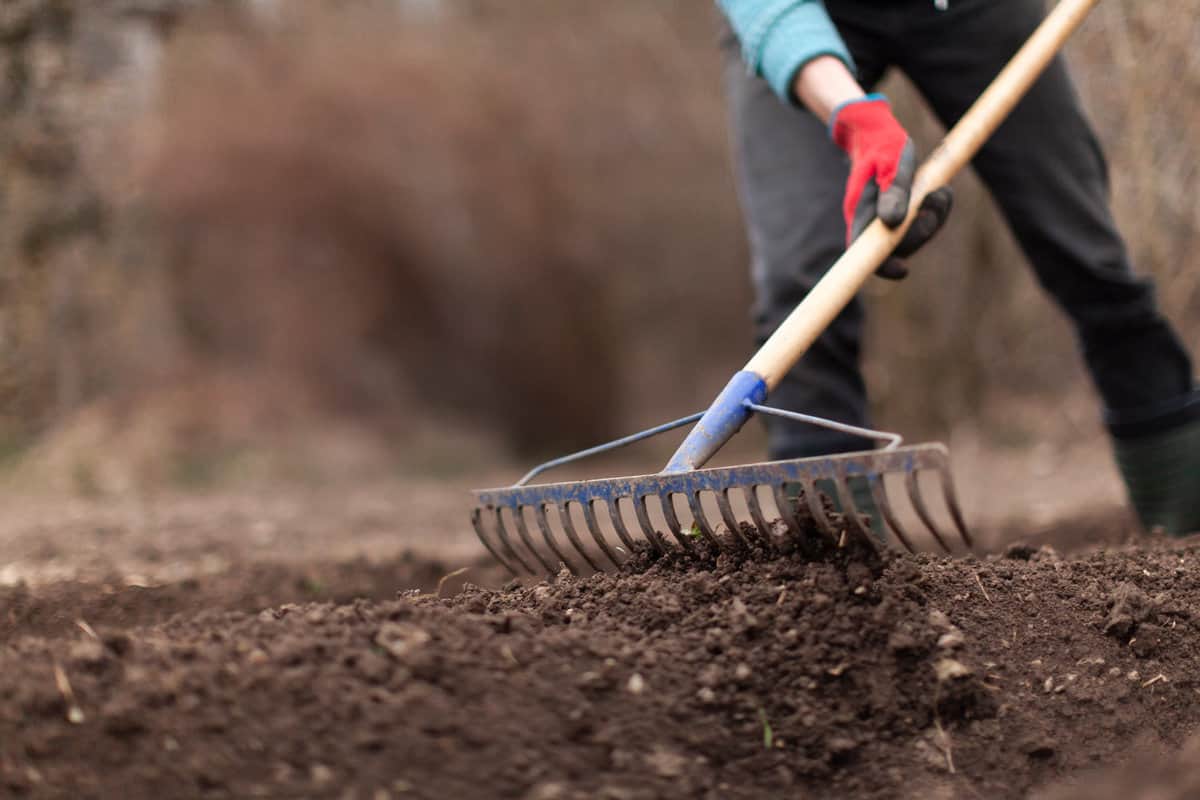Would you like to know how to level a yard after tilling? Well, we have researched this topic and have the answers for you. Understanding how to level a yard after tilling is vital to ensure the ground is level and has proper drainage.
To level a yard after tilling, use a hoe to break up the large clumps of dirt. Next, use a rake to level the ground by moving dirt from high areas to low areas. Last, use a digital scale to ensure your yard has the correct grade to avoid sitting water.
This article will teach us how to level a yard after tilling. We will also learn the answers to other interesting questions, such as how do you level an existing lawn and how do you fix pooling water in your yard? Keep reading to learn more.

It's also vital that you rake the ground with at least a three-degree slope. A slope is critical, so water doesn't pool in your yard.
If you aren't sure if the ground has the correct slope, you can use a digital level to check. When the level says the slope is too shallow, adjust it and keep checking until it's acceptable. If you want to buy a digital level, here are two of the best available on Amazon.
24-Inch Digital Level


You can find this product here on Amazon.
Bethel Digital Level


You can find this product here on Amazon.
Lawn Roller
Another way to level a yard after tilling is to use a lawn roller. Take your lawn roller and fill it with water. Once a lawn roller is filled with water, it can weigh over two hundred and seventy-five pounds.
Start rolling the roller back and forth over the tilled ground. The roller will flatten the soil flat and even out bumps. If an area is extra bumpy, roll over it additional times until it smooths out.
You will still need to use a digital level to ensure a grade of at least three degrees.
The Best Tools To Smooth The Ground
When it comes to making the ground smooth, it's vital to have the right tools. Three of the best tools to smooth the ground are lawn rollers, leveling rakes, and wide garden rakes. Let's learn about these tools and their advantages and disadvantages to smooth the ground.
Lawn Roller

The lawn roller is a large barrel that can be filled with water and pushed or pulled to smooth and level the ground. Its incredible weight makes it great at quickly smoothing out bumpy areas.
One drawback to the lawn roller is how hard it can be to use for extended periods. The large barrel mass ensures it takes lots of energy to move it around.
If you want to try a lawn roller to quickly smooth ground, here are two of the best available on Amazon.
Brinly Lawn Roller


You can find this product here on Amazon.
Agri-Fab Lawn Roller


You can find this product here on Amazon.
Leveling Rake
A leveling rake is a device with metal slits that help to spread out bumps of dirt and even the ground. Leveling rakes have the bonus of leveling freshly tilled soil and existing lawns.
One downside to leveling rakes is that they require many passes to balance an area. These rakes work less by force and more by repetition, which can make using them tiring.
If you want to get a leveling rake to smooth ground both tilled and with existing lawns, here are two of the best available on Amazon.
36" Leveling Rake


You can find this product here on Amazon.
30" Leveling Rake


You can find this product here on Amazon.
Wide Garden Rakes
Wide garden rakes can smooth out ground because of their width. When you pull a wide garden rake across the ground, the high areas make contact, while the low areas don't. As you rake over the area, dirt is pulled from high to low areas until the ground is smooth.
One drawback to these rakes is how they are cumbersome. While they aren't too unwieldy to use, they can be a nuisance to find a good place to store them when not in use.
If you want to use wide garden rakes to smooth out your ground, here are two of the best available on Amazon.
Landscaping 36" Rake


You can find this product here on Amazon.
Landscaping 48" Rake


You can find this product here on Amazon.
How Do You Level An Existing Lawn?

To level an existing lawn, use a lawn roller, remove the sod, add filler dirt, or add a top dressing. Let's look at these methods to level an existing lawn and learn how they work.
Lawn Roller
To level an existing lawn with a lawn roller, take it and fill it with water. Next, pull the lawn roller over the grass, making extra passes on bumpy spots.
It's vital that the lawn is wet and the ground is soft when you use the lawn roller. If the soil is hard, it won't be able to level it. This method works best in the spring and fall and can fail in the summer if the ground is hard.
Removing The Sod
Another method for leveling an existing lawn is to cut out the sod over low areas and fill it with dirt. Use rakes to level the ground and then replace the sod.
Be sure to water the sod after replacing it. The grass may be stressed for a few days but will quickly reestablish deeper roots and bounce back.
Top Dressing
To level a yard after tilling using top dressing, you need a wheelbarrow, a shovel, and a rake. Mix a batch of top dressing by mixing one part sand with one part topsoil. You want to add sand to the mix to ensure proper drainage.
Once you have your top dressing, fill your wheelbarrow with it and take it to a low spot. Use your shovel to add top dressing to the low area and a leveling rake to blend it into the grass.
How Do You Fix Pooling Water In Your Yard?

If you have water pooling in your yard, it may be from an inadequate gradient or from low water absorption through your grass. You will need to install a french drain if it's a gradient problem. If your lawn is not allowing water through, then it may be time to dethatch it.
Let's look at each of these problems and learn how to fix water pooling in your yard.
Low Drainage
If your grass isn't allowing water, it may be caused by dead grass creating a waterproof mat at the base of your lawn. The dead grass can be removed with rakes in a process called dethatching.
Take a rake, and while applying significant pressure, rake an area of grass several times quickly. This will pull up and gather the dead grass and open up the sod to allow water to flow.
Keep dethatching the entire lawn until dead grass stops coming up in large clumps.
Shallow Gradient
If water is pooling in your yard because of a shallow gradient, no amount of dethatching will fix it. One of the best solutions is to install a french drain.
To make a french drain dig a trench from the shallowest part of your yard to an area with good drainage. Ensure the trench has a continuous slope of at least two degrees. Now lay perforated drainage pipe along the length of the trench.
Next, fill the trench three inches below the surface with one-inch gravel. This gravel will help water find its way to the drainage pipe. Now cover the top of the trench with dirt and sod if there's grass over it.
Final Thoughts
In this article, we learned to level your yard after tilling; you can use either a hoe and rakes or a lawn roller. We also learned how to level an existing lawn.
Remember, If you can't create the gradient needed to drain water from your yard, you can install a french drain.
We hope you enjoyed this article. If you want to learn more, check out some of these other posts.

